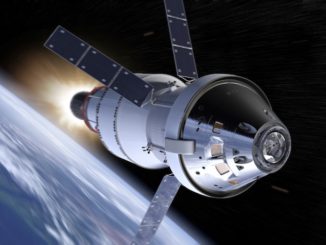SpaceX is set to conduct its tenth test flight of the Starship rocket on **August 24, 2025**. This mission will launch from the company’s facility in Starbase, southern Texas. The flight is scheduled during a one-hour window starting at **18:30 CDT** (19:30 EDT / 23:30 UTC) and comes after a series of challenges faced in earlier test flights.
The upcoming test will utilize **Ship 37** as the upper stage and **Booster 16**. SpaceX aims to expand capabilities with the Super Heavy booster, incorporating multiple landing burn tests into the mission. The flight will also focus on deploying payloads and conducting reentry experiments designed to return the upper stage to the launch site for retrieval.
Among the payloads are **eight Starlink simulators**, which are designed to mimic the dimensions of the third generation of satellites for SpaceX’s broadband constellation. Additionally, the flight will attempt to relight one of the six Raptor engines during the coast phase, a milestone not achieved in previous missions due to upper stage complications.
The previous test flight, **Flight 9**, which launched on **May 27, 2025**, encountered significant issues. A post-flight analysis revealed that the upper stage, **Ship 35**, was lost due to a failure in the main fuel tank pressurization system. SpaceX noted that the failure stemmed from an issue with the fuel diffuser canister located in the main fuel tank’s nosecone.
In a publication by **NASA’s Marshall Space Flight Center**, the diffuser’s role in controlling gas flow to prevent excessive heat transfer was underscored. When the diffuser failed, it led to increased pressure in the nosecone, resulting in the loss of attitude control during the mission. SpaceX also reported that the vehicle lost communication during its uncontrolled reentry.
In addition to issues with the upper stage, **Ship 36** suffered a catastrophic explosion during ground testing on **June 18, 2025**. An analysis indicated that damage to a composite overwrapped pressure vessel (COPV) resulted in structural failure and ignition. In response to this incident, SpaceX will implement stricter inspection protocols and reduce operational pressures on COPVs for future missions.
Recent static fire tests with Ship 37 have shown promise. On **August 1 and 3**, SpaceX completed both single-engine and six-engine tests, with further spin prime tests conducted on **August 13**. Should Ship 37 successfully navigate its planned objectives and achieve a controlled reentry, it would mark a major achievement for the Block 2 version of Starship, which has struggled with previous attempts.
Despite setbacks, SpaceX remains focused on meeting deadlines tied to its partnerships with government entities. **Elon Musk** previously indicated that the third version of Starship, essential for deep space missions such as NASA’s **Artemis 3**, is expected to be operational by year-end. However, the company has consistently fallen short of its milestones, raising concerns among stakeholders.
NASA officials have expressed the importance of the upcoming demonstration for on-orbit propellant transfer, initially scheduled for the first half of **2025**. Lori Glaze, acting associate administrator for NASA’s Exploration Systems Development Mission Directorate, highlighted the significance of the cryogenic propulsion transfer, stating that it is a challenging task that is lagging behind schedule.
In discussions with social media influencers, **Sean Duffy**, Acting Administrator of NASA, conveyed confidence in SpaceX’s capabilities despite recent challenges. He emphasized the company’s historical resilience, stating that setbacks often precede breakthroughs.
As SpaceX prepares for this crucial test flight, the focus remains on advancing the Starship program to meet both commercial and governmental objectives, including the ambitious plans for lunar exploration under the Artemis program. The eyes of the space community will be on Starbase in the coming days as the company attempts to turn the corner on its testing challenges and push towards its ultimate goals in space transportation.
